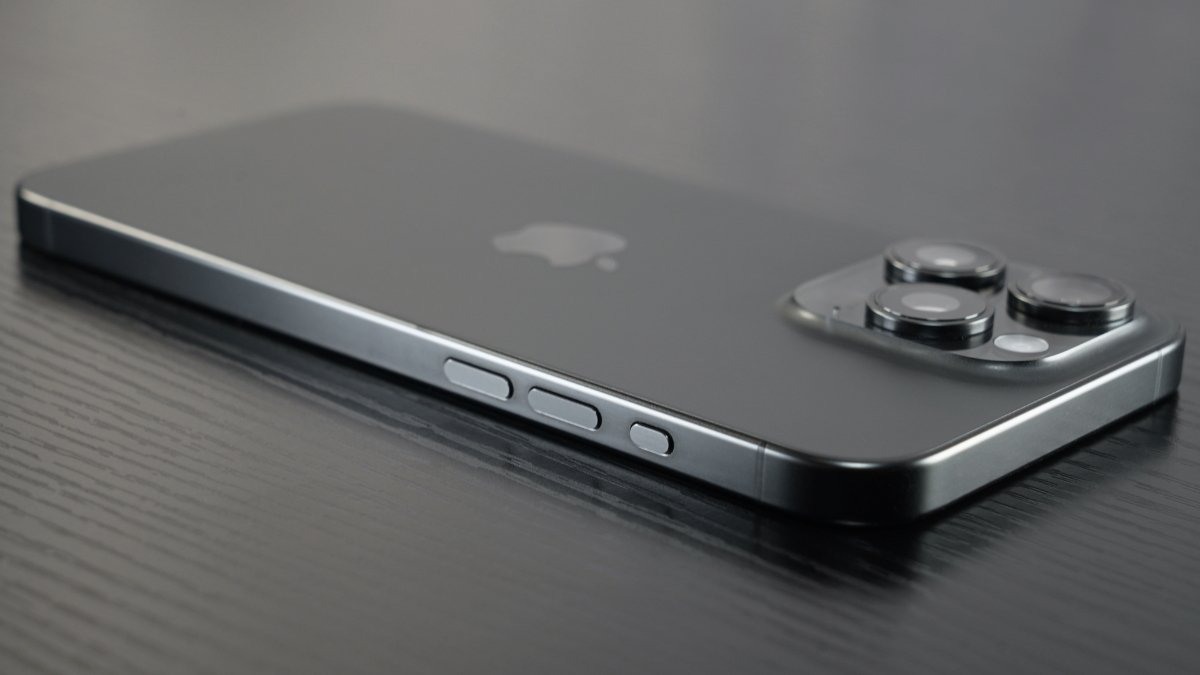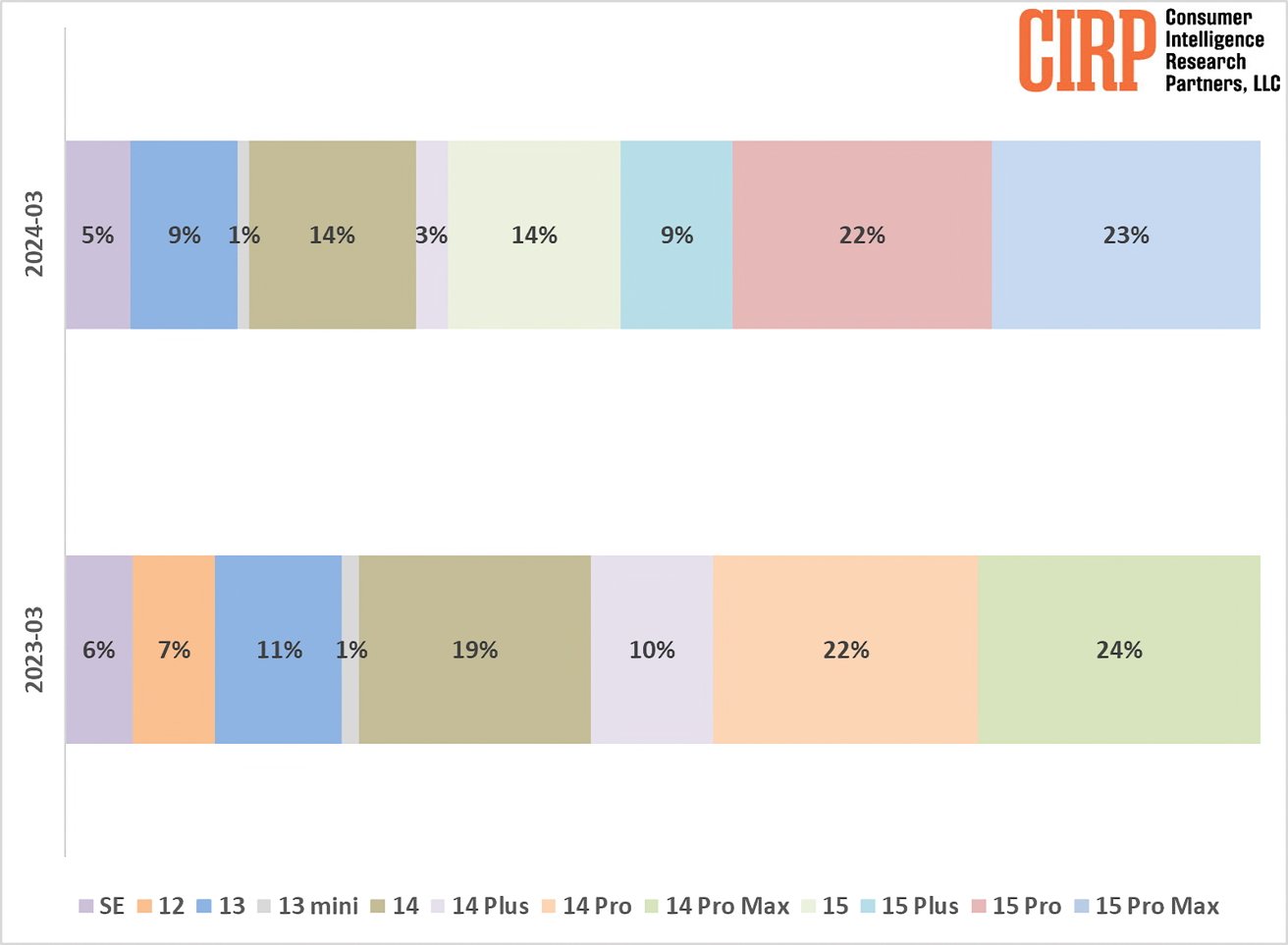Historically, the "Pro" iPhone models get passed by the lower-end model in the spring — but so far 2024 is very different.
The second full quarter since the release of Apple's iPhone 15 series reveals a significant shift in consumer buying habits, particularly affecting the base iPhone 15 model. The shift in consumer preferences is a key factor in the declining popularity of the base model.
While the current iPhone lineup continues to dominate sales, there's a noticeable decline in the market share held by the base model compared to its predecessors.
Consumer Intelligence Research Partners (CIRP) research highlights that the iPhone 15 base model accounts for only 14% of total iPhone sales this quarter. That figure is a significant decrease from the 19% held by the iPhone 14 base model during the same quarter in 2023.
Despite the base model's decline, the iPhone 15 series continues to be a success, accounting for a significant 68% of total iPhone sales. The higher-end Pro and Pro Max models, in particular, have shown a stable performance, maintaining a steady share of 22% to 23% of total sales.
Several factors contribute to the base model's declining popularity. The incremental improvements in iPhone technology have become less groundbreaking over the years, making the latest base models less appealing.
Despite new features like the Dynamic Island, a 48MP main camera, and USB-C integration in the iPhone 15 series, these updates — particularly for the base model — aren't seen as big leaps forward.
Additionally, the integration of USB-C in the base iPhone 15 model is limited to USB 2.0 speeds, which doesn't enhance data transfer rates compared to older models that used the Lightning connector.
The overall market response indicates that while the iPhone 15 series has helped Apple maintain robust sales, consumers may be opting for either older iPhone models or investing in the higher-spec Pro models.
While the high-end models still attract those seeking the latest and greatest, the base iPhone 15's lagging sales could be a signal for Apple to reevaluate its approach to the entry-level market segment.
"We also suspect some economic pressure to reduce spending, when possible, and a generational trend toward sustainability and away from always wanting the newest thing," CIRP ponders. "Together these factors put pressure on the newest base model and pumped-up demand for the one- and two-year old alternatives."
 Andrew Orr
Andrew Orr








-m.jpg)






 Christine McKee
Christine McKee
 Charles Martin
Charles Martin
 Mike Wuerthele
Mike Wuerthele
 Marko Zivkovic
Marko Zivkovic
 Malcolm Owen
Malcolm Owen


 William Gallagher
William Gallagher

-m.jpg)






8 Comments
I’m not that suprised. Apple made a big deal about the improved cameras in the 14 Pro and 15 Pro, and primarily that’s what “phones” are used for anymore (apart from messaging), so folks seem to be paying more to get the best smartphone cameras on either platform.
And yet you can find articles and youtube videos excited about the iphone 15 base models being the biggest upgrade in years …. Go figure…
chasm
Makes sense. I have a base iPhone 11 that I want to upgrade. My plan was to go for the base model this fall, but you know that 5x optical zoom would be very nice. So I’m seriously thinking of going from the base model to the Pro Max this year.
Not unexpected at all. The 15 Pro isn't doing better than 14 Pro (1% worse). But the collapse is in the base 15 and Plus. From 29% to 23%. In total 7% of sales have moved down to previous gen hardware. And 14 base was really just a 13 so those numbers were probably bad as well.
45% of customers going Pro is nice... but Apple is bleeding customers from the bottom of the stack. The drop in sales is what should worry Apple. If you don't buy an iPhone then AirPods and apps are also not being bought.